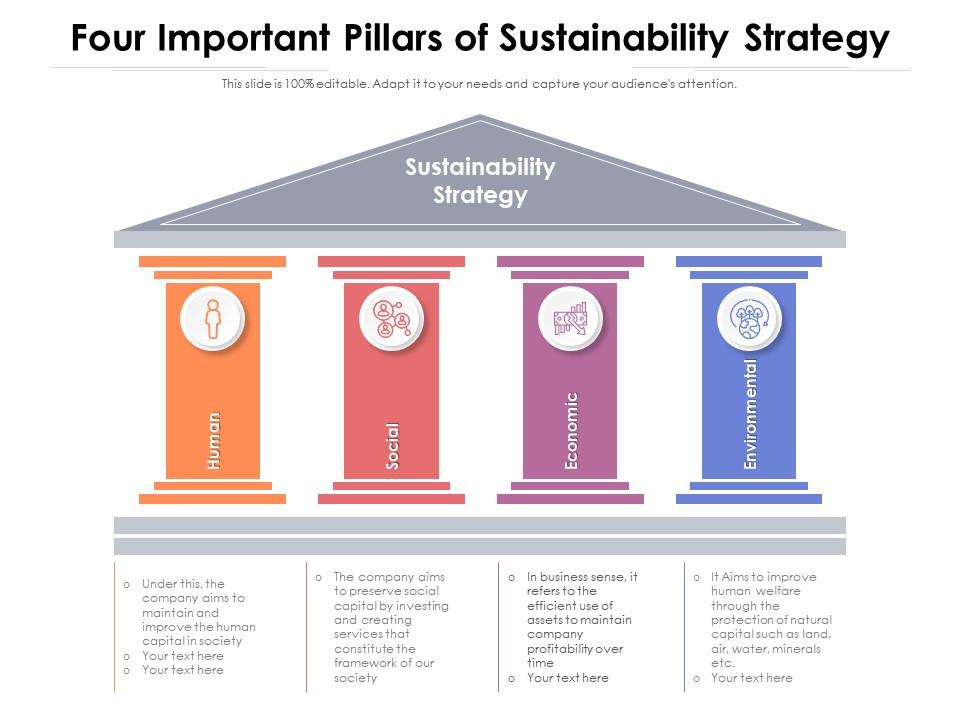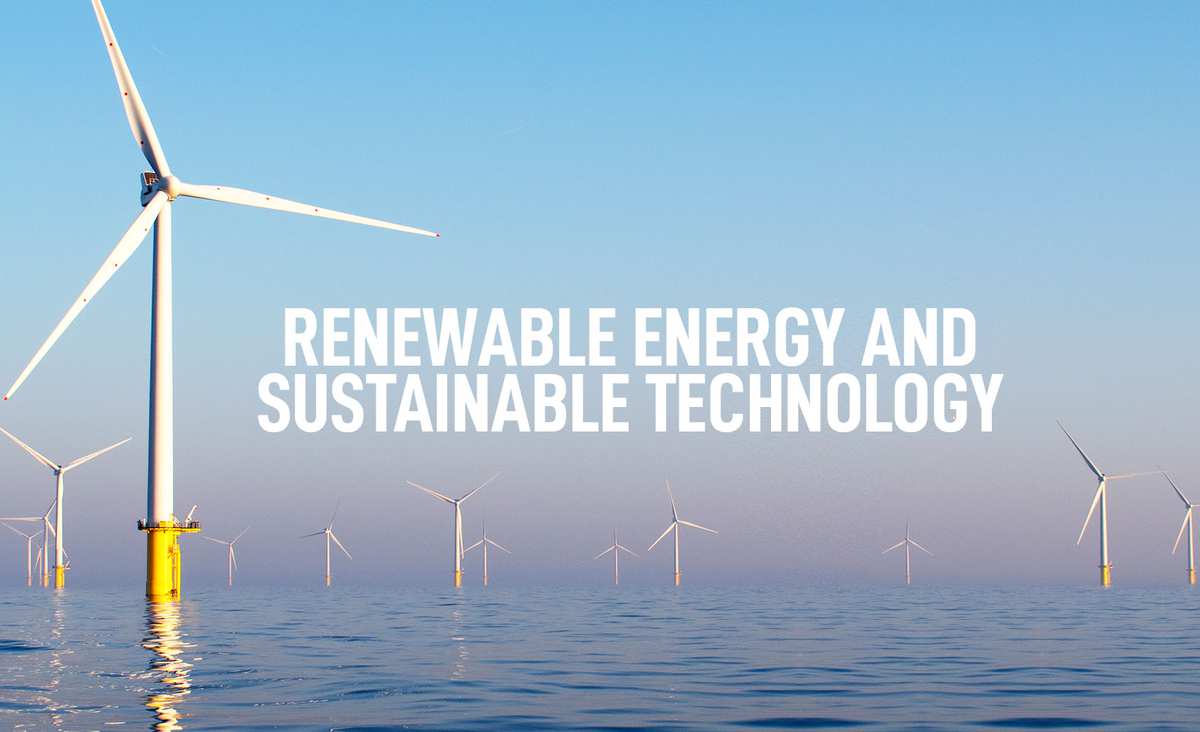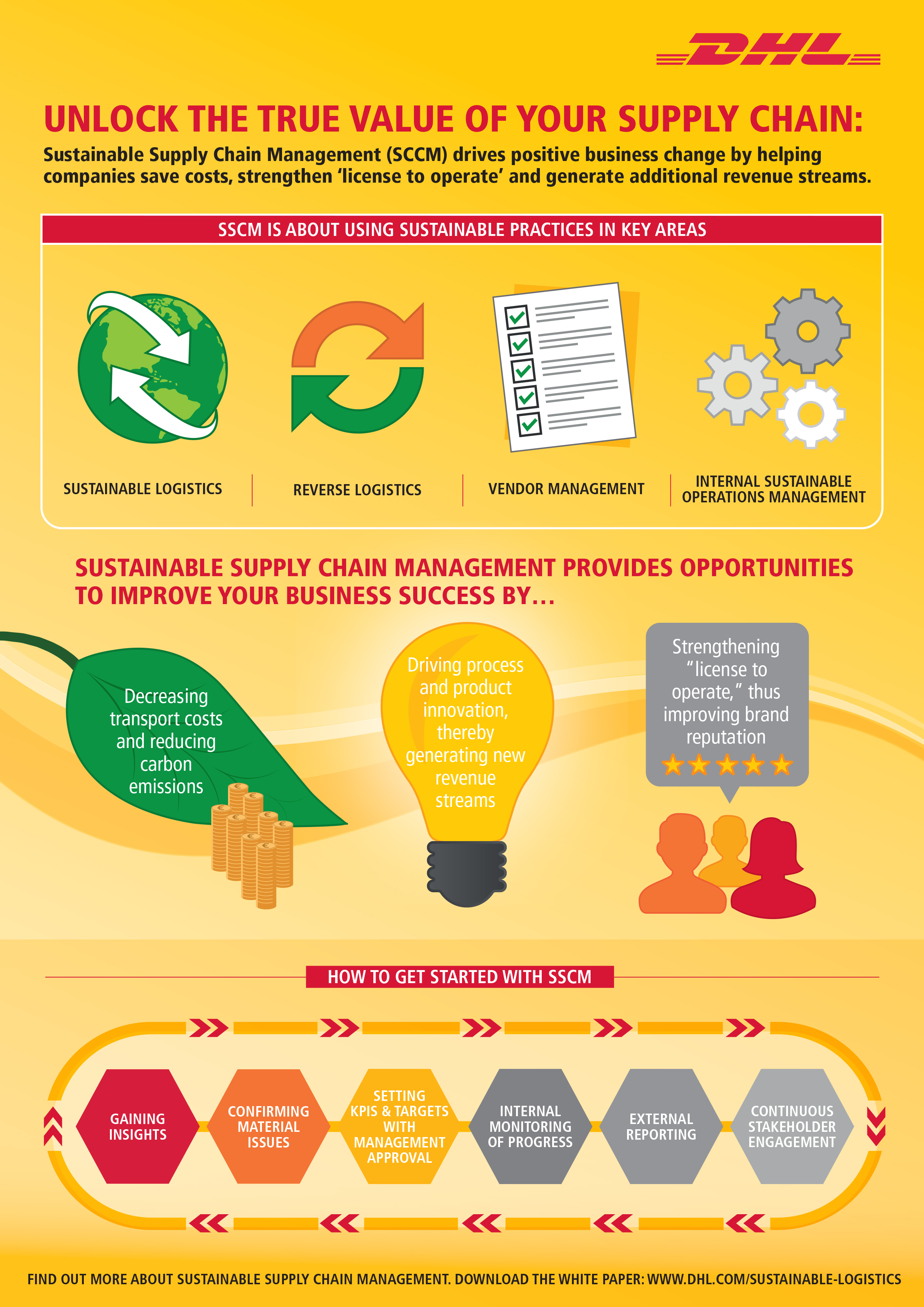Why Sustainability Matters in the Startup World
The startup ecosystem is rapidly evolving, and sustainability has become a crucial aspect of long-term success. As consumers, investors, and governments increasingly prioritize environmental and social responsibility, startups that adopt sustainable practices are better positioned to thrive. By incorporating startup sustainability strategies into their business models, companies can reduce their environmental impact, lower costs, and enhance their brand reputation.
One of the primary benefits of sustainability is cost savings. By reducing energy consumption, waste, and water usage, startups can minimize their operational expenses and allocate resources more efficiently. For instance, a startup that implements energy-efficient lighting and HVAC systems can save up to 30% on its energy bills. Moreover, sustainable practices can also lead to increased productivity and employee engagement, as a green work environment can boost morale and motivation.
Another significant advantage of sustainability is enhanced brand reputation. Consumers are increasingly seeking out companies that prioritize environmental and social responsibility, and startups that demonstrate a commitment to sustainability can gain a competitive edge in the market. A study by Nielsen found that 81% of consumers feel strongly that companies should help improve the environment, and 73% are willing to pay more for sustainable products. By incorporating sustainability into their brand identity, startups can attract customers, investors, and top talent.
Furthermore, sustainability can also drive innovation and growth. By adopting sustainable practices, startups can identify new business opportunities, develop innovative products and services, and expand into new markets. For example, a startup that develops sustainable packaging solutions can tap into the growing demand for eco-friendly products and services. Similarly, a startup that invests in renewable energy can reduce its dependence on fossil fuels and mitigate the risks associated with climate change.
In conclusion, sustainability is no longer a nicety, but a necessity for startups. By incorporating startup sustainability strategies into their business models, companies can reduce costs, enhance their brand reputation, drive innovation, and gain a competitive edge in the market. As the startup ecosystem continues to evolve, sustainability will play an increasingly important role in determining long-term success.
Conducting a Sustainability Audit: Identifying Areas for Improvement
Conducting a sustainability audit is a crucial step in developing effective startup sustainability strategies. A sustainability audit is a comprehensive assessment of a company’s environmental, social, and economic impacts, which helps identify areas for improvement and opportunities for growth. By conducting a sustainability audit, startups can gain a deeper understanding of their sustainability performance, set realistic goals, and develop targeted strategies to improve their sustainability.
The sustainability audit process typically involves assessing energy consumption, waste management, and supply chain practices. Startups can use various tools and frameworks, such as the Sustainability Accounting Standards Board (SASB) or the Global Reporting Initiative (GRI), to guide the audit process. The audit should also involve stakeholder engagement, including employees, customers, and suppliers, to gain a comprehensive understanding of the company’s sustainability impacts.
When conducting a sustainability audit, startups should focus on identifying areas for improvement, rather than simply highlighting successes. This involves analyzing data and metrics, such as energy consumption, water usage, and waste reduction, to identify trends and patterns. Startups should also assess their supply chain practices, including sourcing materials, reducing waste, and promoting fair labor practices.
Once the audit is complete, startups can use the findings to set realistic goals and develop targeted strategies to improve their sustainability. This may involve implementing energy-efficient practices, reducing waste, or promoting sustainable supply chain practices. Startups should also establish key performance indicators (KPIs) to track their sustainability progress and make adjustments as needed.
Some tips for conducting a successful sustainability audit include:
- Engage stakeholders throughout the audit process to gain a comprehensive understanding of the company’s sustainability impacts.
- Use data and metrics to identify trends and patterns, and to track sustainability progress over time.
- Focus on identifying areas for improvement, rather than simply highlighting successes.
- Develop targeted strategies to improve sustainability, and establish KPIs to track progress.
By conducting a sustainability audit and using the findings to develop effective startup sustainability strategies, companies can improve
How to Develop a Comprehensive Sustainability Plan
Developing a comprehensive sustainability plan is a crucial step in integrating sustainability into a startup’s overall strategy. A well-crafted sustainability plan can help startups reduce their environmental impact, improve their social responsibility, and enhance their economic performance. In this article, we will provide a step-by-step guide on how to develop a comprehensive sustainability plan that aligns with your startup’s goals and objectives.
Step 1: Set Clear Objectives
The first step in developing a comprehensive sustainability plan is to set clear objectives. This involves identifying the startup’s sustainability goals and priorities, and establishing key performance indicators (KPIs) to measure progress. Startups should consider their environmental, social, and economic impacts, and set objectives that address these areas. For example, a startup may set an objective to reduce its carbon footprint by 20% within the next year.
Step 2: Engage Stakeholders
Engaging stakeholders is a critical step in developing a comprehensive sustainability plan. This involves identifying the startup’s stakeholders, including employees, customers, suppliers, and investors, and engaging them in the sustainability planning process. Startups should consider the interests and concerns of their stakeholders, and incorporate their feedback into the sustainability plan.
Step 3: Conduct a Sustainability Audit
Conducting a sustainability audit is an essential step in developing a comprehensive sustainability plan. This involves assessing the startup’s environmental, social, and economic impacts, and identifying areas for improvement. Startups should use the findings of the sustainability audit to inform their sustainability plan and set realistic goals.
Step 4: Develop a Sustainability Strategy
Developing a sustainability strategy is the next step in creating a comprehensive sustainability plan. This involves identifying the startup’s sustainability priorities, and developing a strategy to address these areas. Startups should consider their sustainability objectives, and develop a strategy that aligns with these objectives.
Step 5: Establish Key Performance Indicators (KPIs)
Establishing KPIs is a critical step in measuring the success of a sustainability plan. Startups should establish KPIs that align with their sustainability objectives, and use these KPIs to track progress over time. For example, a startup may establish a KPI to measure its carbon footprint, and use this KPI to track progress towards its sustainability objective.
By following these steps, startups can develop a comprehensive sustainability plan that aligns with their goals and objectives. A well-crafted sustainability plan can help startups reduce their environmental impact, improve their social responsibility, and enhance their economic performance.
Renewable Energy and Energy Efficiency: Opportunities for Startups
Renewable energy and energy efficiency are critical components of startup sustainability strategies. By harnessing the power of renewable energy sources, such as solar and wind power, startups can reduce their reliance on fossil fuels and lower their carbon footprint. Additionally, energy-efficient practices, such as LED lighting and smart building technologies, can help startups reduce their energy consumption and costs.
One of the most significant benefits of renewable energy is its potential to reduce greenhouse gas emissions. According to the International Energy Agency (IEA), renewable energy can help reduce carbon emissions by up to 78% by 2050. Startups can take advantage of this opportunity by investing in renewable energy sources, such as solar panels or wind turbines, to power their operations.
Energy-efficient practices are also essential for startups looking to reduce their environmental impact. LED lighting, for example, can reduce energy consumption by up to 90% compared to traditional lighting sources. Smart building technologies, such as energy management systems, can also help startups optimize their energy usage and reduce waste.
Several startups have successfully implemented renewable energy and energy efficiency strategies. For example, Google has invested heavily in renewable energy, with over 3 GW of wind and solar power under contract. Similarly, Amazon has launched a number of initiatives aimed at reducing its energy consumption, including the use of LED lighting and energy-efficient servers.
Startups can also benefit from government incentives and tax credits for renewable energy and energy efficiency investments. In the United States, for example, the Solar Investment Tax Credit (ITC) provides a tax credit of up to 30% for businesses that invest in solar energy systems.
To implement renewable energy and energy efficiency strategies, startups should consider the following steps:
- Conduct an energy audit to identify areas for improvement
- Invest in renewable energy sources, such as solar or wind power
- Implement energy-efficient practices, such as LED lighting and smart building technologies
- Take advantage of government incentives and tax credits for renewable energy and energy efficiency investments
By following these steps, startups can reduce their environmental impact, lower their energy costs, and improve their bottom line.
Sustainable Supply Chain Management: Best Practices for Startups
Sustainable supply chain management is a critical component of startup sustainability strategies. By implementing sustainable supply chain practices, startups can reduce their environmental impact, improve their social responsibility, and enhance their economic performance. In this article, we will discuss the importance of sustainable supply chain management and provide tips on how startups can implement sustainable supply chain practices, even on a limited budget.
One of the most significant benefits of sustainable supply chain management is the reduction of environmental impact. By sourcing materials from sustainable suppliers, reducing waste, and promoting fair labor practices, startups can minimize their carbon footprint and contribute to a more sustainable future. Additionally, sustainable supply chain management can also help startups improve their social responsibility by promoting fair labor practices and ensuring that their suppliers adhere to strict social and environmental standards.
So, how can startups implement sustainable supply chain practices? Here are some tips:
- Conduct a supply chain audit to identify areas for improvement
- Source materials from sustainable suppliers
- Reduce waste and implement recycling programs
- Promote fair labor practices and ensure that suppliers adhere to strict social and environmental standards
- Consider using sustainable packaging materials and reducing packaging waste
Several startups have successfully implemented sustainable supply chain practices. For example, Patagonia, a leading outdoor apparel brand, has implemented a number of sustainable supply chain initiatives, including sourcing materials from sustainable suppliers and reducing waste. Similarly, REI, a leading outdoor retailer, has implemented a number of sustainable supply chain initiatives, including promoting fair labor practices and reducing waste.
Startups can also benefit from using sustainable supply chain management tools and frameworks, such as the Sustainable Supply Chain Management Framework, which provides a comprehensive approach to sustainable supply chain management. Additionally, startups can also benefit from using sustainable supply chain management certifications, such as the Fair Labor Association (FLA) certification, which ensures that suppliers adhere to strict social and environmental standards.
In conclusion, sustainable supply chain management is a critical component of startup sustainability strategies. By implementing sustainable supply chain practices, startups can reduce their environmental impact, improve their social responsibility, and enhance their economic performance. By following the tips outlined in this article, startups can implement sustainable supply chain practices, even on a limited budget.
Employee Engagement and Sustainability: Fostering a Green Culture
Employee engagement is a critical component of startup sustainability strategies. By fostering a green culture, startups can encourage employees to adopt eco-friendly behaviors, reduce their environmental impact, and improve their overall sustainability performance. In this article, we will discuss the importance of employee engagement in driving sustainability efforts and provide tips on how startups can foster a green culture.
One of the most significant benefits of employee engagement is the promotion of eco-friendly behaviors. By encouraging employees to adopt sustainable practices, such as reducing energy consumption, using public transportation, and recycling, startups can reduce their environmental impact and improve their sustainability performance. Additionally, employee engagement can also help startups improve their social responsibility by promoting fair labor practices and ensuring that employees are treated with respect and dignity.
So, how can startups foster a green culture? Here are some tips:
- Promote eco-friendly behaviors, such as reducing energy consumption and using public transportation
- Encourage employees to participate in environmental volunteer programs
- Support employee-led sustainability initiatives
- Provide training and education on sustainability practices
- Recognize and reward employees for their sustainability efforts
Several startups have successfully fostered a green culture. For example, Patagonia, a leading outdoor apparel brand, has implemented a number of employee engagement initiatives, including environmental volunteer programs and sustainability training. Similarly, REI, a leading outdoor retailer, has implemented a number of employee engagement initiatives, including promoting eco-friendly behaviors and supporting employee-led sustainability initiatives.
Startups can also benefit from using employee engagement tools and frameworks, such as the Employee Engagement Framework, which provides a comprehensive approach to employee engagement. Additionally, startups can also benefit from using sustainability metrics, such as the Sustainability Engagement Index, which measures employee engagement and sustainability performance.
In conclusion, employee engagement is a critical component of startup sustainability strategies. By fostering a green culture, startups can encourage employees to adopt eco-friendly behaviors, reduce their environmental impact, and improve their overall sustainability performance. By following the tips outlined in this article, startups can foster a green culture and improve their sustainability performance.
Measuring and Reporting Sustainability Progress: Tools and Metrics
Measuring and reporting sustainability progress is a critical component of startup sustainability strategies. By tracking and communicating their sustainability performance, startups can identify areas for improvement, set realistic goals, and demonstrate their commitment to sustainability to stakeholders. In this article, we will discuss the importance of measuring and reporting sustainability progress, including the use of metrics such as carbon footprint, water usage, and waste reduction.
One of the most significant benefits of measuring and reporting sustainability progress is the ability to identify areas for improvement. By tracking their sustainability performance, startups can identify areas where they can reduce their environmental impact, improve their social responsibility, and enhance their economic performance. Additionally, measuring and reporting sustainability progress can also help startups set realistic goals and develop targeted strategies to improve their sustainability.
So, how can startups measure and report their sustainability progress? Here are some tools and metrics that can help:
- Carbon footprint: This metric measures the amount of greenhouse gas emissions produced by a startup’s operations.
- Water usage: This metric measures the amount of water used by a startup’s operations.
- Waste reduction: This metric measures the amount of waste reduced by a startup’s operations.
- Global Reporting Initiative (GRI): This framework provides a comprehensive approach to measuring and reporting sustainability progress.
- Sustainability Accounting Standards Board (SASB): This framework provides a set of standards for measuring and reporting sustainability progress.
Several startups have successfully measured and reported their sustainability progress. For example, Patagonia, a leading outdoor apparel brand, has implemented a number of sustainability metrics, including carbon footprint and water usage. Similarly, REI, a leading outdoor retailer, has implemented a number of sustainability metrics, including waste reduction and energy efficiency.
Startups can also benefit from using sustainability reporting tools, such as the Sustainability Reporting Tool, which provides a comprehensive approach to measuring and reporting sustainability progress. Additionally, startups can also benefit from using sustainability metrics, such as the Sustainability Performance Index, which measures a startup’s sustainability performance.
In conclusion, measuring and reporting sustainability progress is a critical component of startup sustainability strategies. By tracking and communicating their sustainability performance, startups can identify areas for improvement, set realistic goals, and demonstrate their commitment to sustainability to stakeholders. By following the tips outlined in this article, startups can measure and report their sustainability progress and improve their sustainability performance.
Overcoming Common Sustainability Challenges in Startups
Implementing sustainability strategies can be challenging for startups, especially those with limited resources, competing priorities, and lack of expertise. However, with the right approach, startups can overcome these challenges and maintain momentum on their sustainability initiatives. In this article, we will discuss common sustainability challenges that startups face and provide advice on how to overcome them.
One of the most significant challenges that startups face is limited resources. Startups often have limited budgets, personnel, and infrastructure, which can make it difficult to implement sustainability strategies. However, there are several ways that startups can overcome this challenge. For example, startups can start by implementing small-scale sustainability initiatives, such as reducing energy consumption or waste, and then scale up their efforts as their resources grow.
Another challenge that startups face is competing priorities. Startups often have multiple priorities, such as growing their customer base, developing new products, and managing their finances, which can make it difficult to prioritize sustainability. However, startups can overcome this challenge by integrating sustainability into their overall strategy and making it a core part of their business model.
Lack of expertise is another challenge that startups face. Startups may not have the necessary expertise or knowledge to implement sustainability strategies, which can make it difficult to get started. However, startups can overcome this challenge by seeking out external expertise, such as consultants or sustainability experts, or by providing training and education to their employees.
So, how can startups overcome these challenges and maintain momentum on their sustainability initiatives? Here are some tips:
- Start small and scale up your sustainability efforts as your resources grow
- Integrate sustainability into your overall strategy and make it a core part of your business model
- Seek out external expertise or provide training and education to your employees
- Communicate your sustainability efforts to your stakeholders and employees
- Monitor and evaluate your sustainability progress regularly
Several startups have successfully overcome these challenges and implemented sustainability strategies. For example, Patagonia, a leading outdoor apparel brand, has implemented a number of sustainability initiatives, including reducing energy consumption and waste, and promoting fair labor practices. Similarly, REI, a leading outdoor retailer, has implemented a number of sustainability initiatives, including reducing energy consumption and waste, and promoting sustainable supply chain practices.
In conclusion, implementing sustainability strategies can be challenging for startups, but with the right approach, they can overcome these challenges and maintain momentum on their sustainability initiatives. By following the tips outlined in this article, startups can overcome common sustainability challenges and achieve long-term success.







